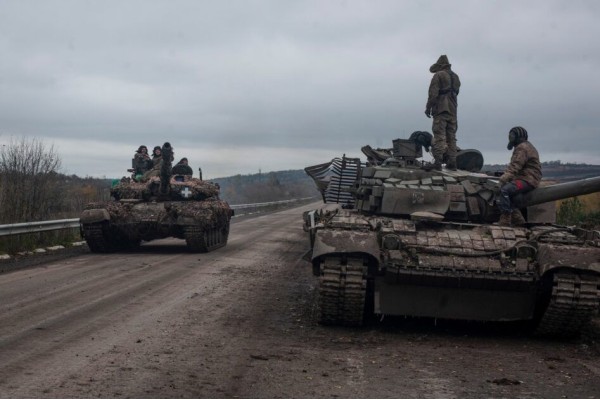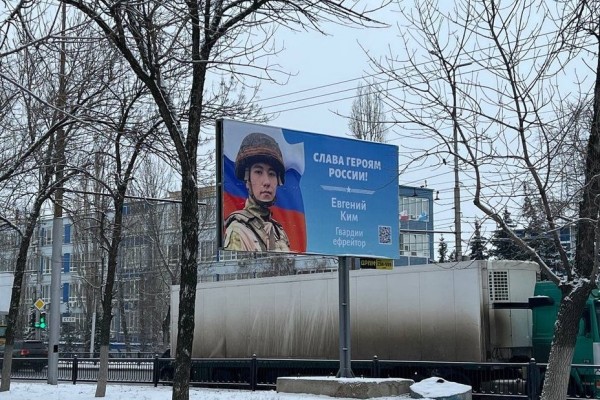War fever in Europe
From drones to domino theory, old fears keep shaping new crises on the continent

Fears that Russia’s actions in Ukraine will inevitably trigger a wider European conflict often exaggerate the real threat, writes Richard Sakwa. Photo by Kurt S/Wikimedia Commons.
Is Europe really under attack from Russia? And if so, in what ways? If the answers to these two questions is yes, then we really are in a pre-war situation, and we should prepare accordingly. But what if the threat from Russia has been exaggerated, and the war scare is yet another example of the periodic militaristic hysteria which seizes the continent, always with damaging consequences? It then becomes a matter of critical importance to separate fact from fiction, reality from myth, and thereby possibly prevent the frenzy from becoming a self-fulfilling prophecy.
A spate of recent incidents gives grounds for the belief that the continent is under assault from Russia. On September 10 at least 19 unarmed Russian drones entered Polish airspace, four of which were shot down by Polish jets and NATO forces. Poland’s Prime Minister Donald Tusk warned that “a line has been crossed,” and that the “situation brings us the closest we have been to open conflict since World War Two.” Serious indeed, worse than the Berlin blockade of 1948, the Soviet invasion of Hungary in 1956, the Berlin Crisis of 1960-61, all the way through to NATO’s Able Archer military exercise in 1983, which the Soviet leadership believed was a cover for a NATO attack. This was threat inflation taken to extreme levels and exposes the febrile state of Europe today.
Ukrainian President Volodymyr Zelensky called the incident “a systemic Russian campaign directed against Europe, against NATO, against the West,” and called for “a systemic response. Strong action must be taken,” warning that Putin will “not… finish his war in Ukraine. He will open up in some other direction’ by attacking another European country.” Addressing the 80th United Nations General Assembly, he insisted that “Ukraine is only the first. And now Russian drones are already flying across Europe.” He had already invoked the escalating Russian threat in November 2022 when a stray missile entered Poland and killed two civilians. It turned out that the missile was Ukrainian. Nevertheless, the view that Russia is undertaking a “hybrid war” against Europe has taken a deep hold in European political and expert circles.
On September 19 three Russian jets on a routine flight from the Russian mainland to the Kaliningrad exclave violated Estonian airspace. Estonian Foreign Minister Margus Tsakhna described the violation as “unprecedentedly brazen.” In both cases, the Polish and Estonian authorities called for consultations under NATO’s Article Four, which stipulates discussions when a member country is threatened. In fact, the Russian jets had only deviated marginally from their prescribed route along the middle of the Gulf of Finland, to the north of the uninhabited Estonian island of Vaindloo, which lies 16 miles to the north of the Estonian coast. A few days earlier, on September 13, a Russian Geran drone entered Romanian airspace, once again precipitating overblown warnings that the incursion represented “a new challenge to regional security.” Alleged drone sightings then forced the closure of a number of European airports, including Copenhagen and Munich, with the incidents ascribed, again, to Russian “hybrid warfare.”
Zelensky appealed to the ‘domino theory,’ the view that if not stopped in Ukraine, Russia would go on to attack NATO countries further west. Zelensky and his supporters drew on dubious historical records. After US forces suffered 49,000 deaths in the Korean War (1950-53), Washington vowed not to engage in a mainland war in Asia, and yet less than a generation later it lost 59,000 in the Vietnam War (1964-75). The US shook off the Vietnam syndrome by refusing to come to terms with the suffering it had inflicted on Indochina. The war was driven by the false logic of the domino theory, asserting that unless stopped in Vietnam the communist insurgency would spread to the rest of Asia. In fact, nationalism rather than communism was the driving force in Hanoi’s drive to unite the country. Now, Zelensky and his supporters argue that if Putin is not stopped in Ukraine, then he will go on to invade Poland, Estonia, Romania or some other country.
A frequent misunderstanding, repeated by much of the mainstream media, is that Russia’s war aims are purely territorial. Observers often ask whether Moscow will stop if it takes all four regions it claimed in 2022. Yet focusing on land misses the larger objective. Capturing more territory is primarily a bargaining tool, intended to pressure Kyiv into accepting Russian demands. The Istanbul drafts of 2022 revealed that Moscow’s overarching goal is to neutralize Ukraine militarily, prevent NATO expansion, and secure politically compliant conditions in Kyiv. Even full control of the annexed areas would not constitute victory in this broader strategic sense. Evaluating Russia’s progress solely by front-line gains overlooks the persistent threat of strikes and political leverage Russia can exert to shape negotiations—a strategy that continues even when territorial advances stall.
Moreover, this revived domino theory has no basis in fact. There is nothing in Russia’s national security strategy, leadership speeches or military planning that suggests an offensive campaign against a NATO country. This has not prevented a burgeoning literature on Russia’s threat to everything and everybody. Speaking at the Valdai Discussion Club in Sochi on October 2, Putin condemned European elites for “whipping up hysteria” about the “Russian threat,” and advised them to “Calm down, sleep tight and, finally, deal with your own issues.” He argued that the Russian threat was used as a diversionary tactic by these European elites, to cover their failure to resolve domestic problems and as an excuse for their unpopularity. Even if Putin had the ambition to attack neighbouring countries, Russia lacks the means. The assertion is reminiscent of President Lyndon Johnson’s comments in July 1965 on North Vietnamese war aims: “Its goal is to conquer the South, to defeat American power, and to extend the Asiatic dominion of communism.” In fact, the goal was the reunification of Vietnam, as envisaged by the July 1954 Geneva Accords, and no more.
In the event, we still have no clear facts about the Polish drone incident. Like the sabotage of the Nord Stream pipelines in the Baltic Sea in September 2022, we are unlikely to get answers any time soon—which itself is disturbing. Three main theories seek to explain the incident, quite apart from the view that the drones wandered into Poland simply by accident. The first is that Moscow was probing NATO’s air defences, while at the same time sending a warning for the European ‘coalition of the willing’ not to send troops to Ukraine as part of any peace settlement. The response was the plan to build a ‘drone wall.’ The second is that Ukraine patched up downed Russian drones and deliberately sent them towards Poland as part of a false flag operation. Some of the drones were bound with tape, giving credence to this version.
The third explanation is that the drones were knocked off course by Ukrainian jamming. Since swarms of drones are set at the same frequency, a number could be diverted as part of the same action. This version is supported by the fact that Belarus warned Poland about the incoming craft, which the Polish side acknowledged as being “helpful.” Thus, the whole incident was probably unintentional, and the response overblown. However, like the Gulf of Tonkin incident in August 1964, in which a US destroyer collecting intelligence information close to the North Vietnamese coast was attacked by Vietnames torpedo boats, precipitating the full-scale US invasion of Vietnam. Misrepresentation and deception can have disastrous consequences.
Since the beginning of the war, the Ukrainian leadership has tried to draw NATO into a direct conflict with Russia. The attempt to escalate the semi-proxy war into open hostilities, through the imposition of a no-fly zone and the like, is fraught with danger for the continent. Back in 1998, in the debate over NATO enlargement, the veteran US diplomat George Kennan argued that “I was particularly bothered by the references to Russia as a country dying to attack Western Europe.” Today, we should all be bothered.
Richard Sakwa is Emeritus Professor of Politics at the University of Kent. He has published widely on Russian, European and global affairs. Recent books include Russia against the Rest: The Post-Cold War Crisis of World Order (Cambridge University Press, 2017), The Putin Paradox (I. B. Tauris, 2020), Deception: Russiagate and the New Cold War (Lexington Books, 2022) and The Lost Peace: How the West Failed to Prevent a Second Cold War (Yale University Press, 2023).










